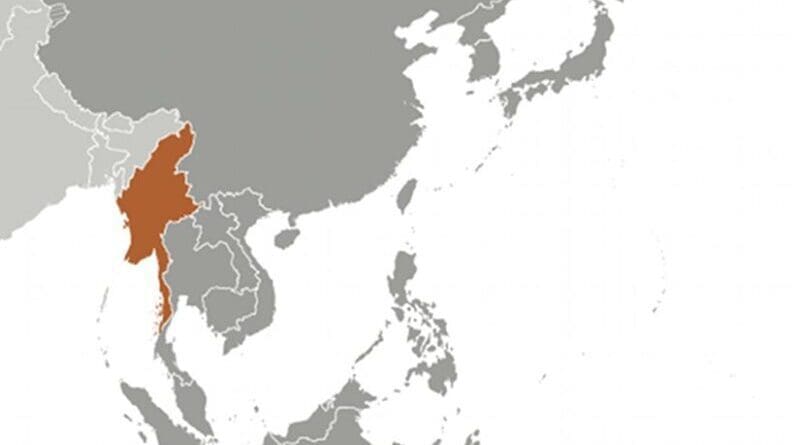Ethnic Struggles Are Central To Burma’s Future – Analysis
By David I. Steinberg
For the past 20 years, foreign interest in Burma, or Myanmar, has been understandably concentrated on the problems of democracy and human rights. Although this is of continuing concern, the central, unresolved issue facing the state since independence in 1948 has been finding the solution to the problem of governance of this profoundly multi-cultural society.
Through several political incarnations, each government—civilian and military, socialist and capitalist—has designated the country as the “Union” of Burma or Myanmar. Yet, the concept of union is fragile and often violently contested.
About two-thirds of the country’s population is ethnic Burman (or Bamar). The remaining third comprises seven major indigenous ethnic minorities, also called ethnic “nationalities”—Shan, Karen, Rakhine, Mon, Kachin, Chin and Kayah—and more than 100 other recognized “ethnicities,” many of whom are linguistic or dialect groups.
Generally, the country’s central and upper plains are predominantly populated by ethnic Burmans, with the minority areas concentrated in the steep, rugged highlands near the country’s borders. For generations, this difficult terrain has been the battleground of attempted armed rebellions by minority groups.
While the establishment this year of legislatures, or hluttaws, in minority areas (albeit with 25 percent of their seats reserved for active duty military) might seem a step toward increasing minority groups’ authority, three unresolved issues will likely cause continuation of majority-minority tension. These are:
1. The minorities’ belief in their rights;
2. The attitudes of the Burman authorities and lack of national socio-economic and political mobility; and
3. The dilemma of the minority armies that remain in place, refusing either to disarm or to join the centrally controlled Border Guard Forces.
How much authority the new local legislatures will have is unclear, but it is likely to be less than what minority groups hoped for. While the importance of more local authority has grown over time, reflecting the rise of educational standards, nationalism, and identity, the calls for various forms of federalism, which could grant genuine authority to minority areas, remain unanswered and unfulfilled.
All avenues of social mobility and advancement are under military control. Political power, higher education, civil society, the sangha (monkhood), and the economy are dominated by the central military, or tatmadaw, which remains the most direct route to social mobility and authority. For a national ethos to prevail and be accepted, these avenues must be seen to be reasonably open to all ethnicities and religions. They currently are not; the upper levels of the military are virtually all Burman.
Tensions over minority rights and socio-economic mobility are continuing, but an immediate minority problem of the Border Guard Forces (BGF) will preoccupy the new government. The cease-fire agreements of the past allowed minority groups to maintain their armed forces and hold their weapons as long as they did not attack the tatmadaw. Yet the revamped 2008 constitution specifically calls for a single military, so some solution had to be found.
Multiple supposed negotiations have taken place, but the central authorities have been adamant on their terms, and various deadlines have passed without resolution of the issue. On September 1, the last deadline was issued by the junta, stating that thereafter the cease-fires would be void, implying that retribution would follow.
The minority armies are now under pressure to either give up their arms or transition into the tatmadaw-controlled BGF. Some minority armies have formed alliances and have been recruiting, evidence that they will resist if the tatmadaw’s ultimatum is acted upon.
Will this rising ethnic nationalism trump central politics? A Chin politician, for instance, has called for the teaching of Chin language in the official curriculum, something that has never been allowed for any internal minority (despite the fact that, constitutionally, their languages are to be fostered and protected). Might ethnicity in such a case prompt local calls for change, and if so, how might the central administration react?
Perhaps equally important politically is the issue of Chinese or state-sponsored infrastructure, such as pipelines, dams, or mines, that offer few rewards to local populations, who often are displaced and generally marginalized by such projects. Will local issues, almost never before considered in any centrally planned project, result in objections that are seriously considered? This may come to pass, but it is likely to be a slow, painful process.
If central, military-inspired intransigence on minority problems continues, if denigration of minority cultures is not diminished, and if a compromise on the minority armies and militias is not reached, then the prospect will increase for renewal of the virtually perennial violence. The result will not only be continued suffering by Burma’s peoples, but also regional instability, an increased flow of refugees (and possibly heightened human trafficking), and likely expansion of narcotics production. Both China and Thailand would regard such developments as serious issues negatively affecting their national interests.
Thus, the international community should attempt, for both humanitarian and security reasons, to persuade those involved that the minority questions should be given high priority in any discussion of Burma’s future.
David Steinberg, a Distinguished Professor of Asian studies at Georgetown University’s School of Foreign Service, was formerly U.S. Agency for International Development Director for Philippines, Thailand, and Burma Affairs.
Note: This commentary is drawn from Dr. Steinberg’s East-West Center Working Paper “Myanmar’s Perpetual Dilemma: Ethnicity in a ‘Discipline-Flourishing Democracy.’”

